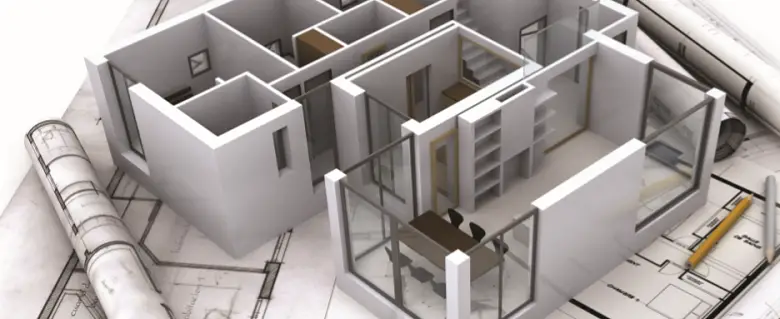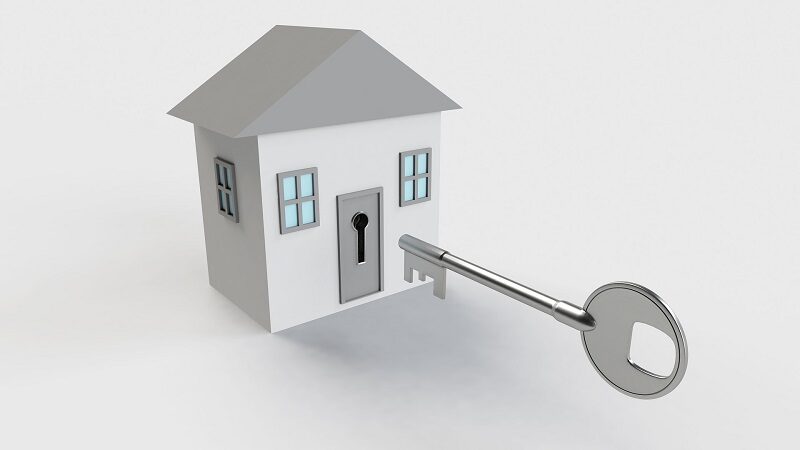
Accessible housing: the progress and problems still to be addressed
Have you struggled to find accessible housing? Being able to have your own home and independence is a basic human right. But for many disabled people, it seems an impossible dream. Able Magazine recently delved into the progress that means we’re closer to accessible housing for all, and what more needs to be done.
Although you might think that the front line, so to speak, for disability campaigners would still be in dealing with issues like visibility and awareness of disabled people or accessible public spaces and so on, you might be surprised to find that some are looking at how domestic dwellings can be improved for disabled people. The ‘home front’ if you like.
Lots of disabled people will identify with a desire to live independent lives in their own home, perhaps with occasional support from family or healthcare workers or well-chosen adaptive technology and so on. Adaptations that help disabled people (such as stairlifts) are usually applied to the home as an ‘aftermarket’ concern.
However, more people are beginning to think differently, perhaps in the wake of successful public builds. There might just be another way of looking at things. What if buildings were designed to be accessible from the start? How can people, disabled or not, get the best out of a building over the course of a lifetime?
A new trend among campaigners has seen them champion inclusion into the original architectural design of buildings. The hope is that more of us will be able to enjoy life in our own homes, for longer.
Even though the vast majority of us live in an older house, rather than a new-build, it’s still a battle worth fighting. At some point, we’re all likely to need to relocate for reasons relating to disability.
And that’s not to mention the fact that we should also support changes to our traditional housing development policies to a more universal model that works for all.
Progress with accessible housing
The process for finding an accessible house is a slow one, but progress is coming along. In an age of housing shortages, ‘details’ such as accessibility and sustainability are seemingly put to one side in favour of speed of delivery.
Able Magazine spoke with architect, Vaila Morrison, who at Naidex disability event entitled her Home, Design & Build Summit seminar: ‘Shouldn’t All Homes Be Inclusive?’ While it sounds like there’s a very obvious answer to that question, it’s currently not quite as simple as all that.
“The main change in recent years has been that building regulations have absorbed a lot of housing standards for accessibility,” she told us positively, adding, “Before it was random – different places, different standards.
The main one that we used to work to was the Lifetime Homes standard, which outlines ‘adaptability’. This is the notion that a building is ‘adaptable’. Then there’s the Wheelchair Housing Design Guide (produced by housing association, Habinteg).
Those two standards have broadly been brought into the building regulations and there are now three categories in there for access. Category one is ‘visitable’. This encompasses very basic access – a level threshold if possible, a downstairs toilet, if you can – and that’s the default that developers have to aim for.
Category two is similar to Lifetime Homes, but it doesn’t have certain features, such as designing a space on the access level that could be used as a bedroom if someone had an illness. We also used to have to allocate a space where you could put a vertical lift if it was needed in the future. Neither are in building regulations. Category three is full wheelchair access, but it’s only category one that’s the default.”
Building regulations and accessible housing

You might assume that because parts of the Lifetime Homes standard are written into ‘building regulations’ that the problems are solved. Sadly, it’s a little more complicated than that – and doesn’t altogether eradicate the postcode lottery element of availability of accessible housing stock.
The fact is that planning and building regulations are linked together. If planning policy states that a certain number of dwellings have to conform to one of these categories then, of course, the developers have to commit to delivering them or risk being refused planning approval for their projects.
Vaila also adds: “There are different levels of planning and the main national planning is very vague with broad brush statements. Individual planning authorities, on the other hand, set their own: the ‘local plan’ and that’s the policy that local authorities work to. Things like accessibility should ideally be in the local plan.” In other words, different authorities can pick and choose which elements to uphold.
Despite this disappointing backdrop, there are areas of the country where local authorities are ‘doing the right thing’ – and it might surprise you to find out where they are.
“Although it’s split up into boroughs, the Greater London Authority (GLA) has what it calls the London Plan. Since 2004 they’ve had 90% Lifetime Homes standard and 10% wheelchair accessible. That’s now switched to category two and category three – so London has done it.
It tends to be metropolitan areas. The argument for me is that, well if the places where they’ve got the higher land values and the higher build costs can manage to do it, why are we not doing it everywhere? It just seems crazy!” explained Vaila.
Policy around accessible housing
Campaigners like Vaila are still pushing for accessible policies to be properly enshrined and enforced in building regulations. If they are, then they have ‘more teeth’ when developers don’t come up to scratch.
Perhaps the thing that will really start to accelerate change is a shift in public perception. For the majority of new home purchasers, the word ‘accessible’ doesn’t sound homely, it sounds clinical.
Vaila agrees, saying: “There’s got to be a marketing shift. We watch all of these home design shows on the telly and they talk about green issues all of the time. I think we should also be talking about accessibility, flexibility and inclusivity as well, as part of that sustainability for the future. Society has to catch up and realise that it’s good for everybody not just for the individual.”
The good news is that there are already local authorities and developers prepared to lead the way on the subject. Vaila concludes, saying: “There was a review last year on disability and the environment. It recommended that category two become the default standard for all local authorities and that a certain percentage be category three, wheelchair accessible.
But the Government didn’t really respond to that, which was quite disappointing. There is movement, but it’s slow. It’s a matter of encouraging local authorities to up their game and follow the examples that have already been set.”
By Able Magazine
Updated 2024
Accessible Housing: Progress and Challenges
The Crisis Deepens
The UK’s accessible housing crisis is worsening, with 1.8 million disabled people in need of accessible housing, and 700,000 of these individuals having incomes within the top 50% of the income distribution[1]. This highlights that private money alone cannot solve the accessible housing crisis.
Systemic Issues
- Lack of Accessible Social Housing: The shortage of accessible social housing has pushed many disabled individuals into the private rented sector (PRS), which is already challenging from an accessibility standpoint. Landlords often sell up and serve section 21 notices to tenants with disabilities, exacerbating the problem[1].
- Inconsistent Enforcement: Building regulations have absorbed housing standards for accessibility, but enforcement is inconsistent across different local authorities. The London Plan, for example, requires 10% of new builds to be wheelchair accessible, but this standard is not universally applied[1][7].
Promoting Inclusive Design
- Designing for Accessibility: Advocates are pushing for homes to be designed to be accessible from the start, rather than relying on aftermarket adaptations. This includes incorporating features like stairlifts and adaptable spaces into the original architectural design[7].
- Changing Public Perception: There is a need for a marketing shift to emphasize the benefits of accessible housing for all, not just for individuals with disabilities. This includes highlighting the importance of accessibility, flexibility, and inclusivity in housing design[7].
Recent Developments and Proposals
- Disability Facilities Grant (DFG) Issues: The DFG system is plagued by long waiting times and a cap of £30,000 since 2008, which has not kept pace with inflation. This has left many vulnerable individuals without necessary home adaptations[4].
- Private Rented Sector Challenges: 1 in 3 disabled renters in the PRS are forced to live in unsuitable homes. Disability groups are calling for landlords to provide basic accessibility information about their properties and for the government to set national standards for new homes[3][6].
- Government Action Needed: The government is urged to act now to avoid deepening the accessible homes crisis. This includes implementing the ‘accessible and adaptable’ dwelling standard as the regulatory baseline for all new homes and strengthening rules on planning for the housing needs of older and disabled people[6].
Expert Insights
- Vaila Morrison, Architect: “The main change in recent years has been that building regulations have absorbed a lot of housing standards for accessibility… However, there are different levels of planning, and individual planning authorities set their own local plans, which can lead to inconsistencies in enforcement[7].”
- Mikey Erhardt, Disability Rights UK: “Disabled people are disproportionately affected by the housing crisis. They need bold action… The private housing sector will never deliver for disabled people without government intervention[2].”
Key Statistics
- 9% of English homes have basic accessibility features[5].
- 104,000 people in England are on local authority waiting lists for an accessible or adaptable home[5].
- 47 years is the potential wait time for a new-build wheelchair-accessible home[5].
Call to Action
- Implement Accessible Standards: All new homes should be built to accessible and adaptable standards to provide ease of living and speedy, cost-effective adaptation when household needs change[6].
- Strengthen Planning Rules: The National Planning Policy Framework (NPPF) should be revised to set clear expectations for local plans to include policies for wheelchair user dwellings[6].
Resources
- RICS: https://ww3.rics.org/uk/en/journals/property-journal/accessible-homes-private-rented-sector.html
- Inside Housing: https://www.insidehousing.co.uk/comment/the-private-housing-sector-will-never-deliver-for-disabled-people-without-government-intervention-87855
- Disability Rights UK: https://www.disabilityrightsuk.org/news/disability-groups-call-more-accessible-housing-private-renters
- Big Issue: https://www.bigissue.com/opinion/disabled-people-disability-facilities-grant-housing-crisis/
- House Beautiful: https://www.housebeautiful.com/uk/lifestyle/property/a41242126/accessible-housing-crisis-uk/
- Habinteg: https://www.habinteg.org.uk/latest-news/government-should-act-now-to-avoid-deepening-accessible-homes-crisis-2450/
- Disability Horizons: https://disabilityhorizons.com/2024/11/accessible-housing-the-progress-and-problems-to-be-addressed/
Citations:
[1] https://ww3.rics.org/uk/en/journals/property-journal/accessible-homes-private-rented-sector.html
[2] https://www.insidehousing.co.uk/comment/the-private-housing-sector-will-never-deliver-for-disabled-people-without-government-intervention-87855
[3] https://www.disabilityrightsuk.org/news/disability-groups-call-more-accessible-housing-private-renters
[4] https://www.bigissue.com/opinion/disabled-people-disability-facilities-grant-housing-crisis/
[5] https://www.housebeautiful.com/uk/lifestyle/property/a41242126/accessible-housing-crisis-uk/
[6] https://www.habinteg.org.uk/latest-news/government-should-act-now-to-avoid-deepening-accessible-homes-crisis-2450/
[7] https://disabilityhorizons.com/2024/11/accessible-housing-the-progress-and-problems-to-be-addressed/
- The ultimate guide to accessible festivals across the UK
- How to live the life you want and be a kick-ass disabled person
- 5 disability aids and gadgets that can help you live independently
Originally posted on 01/07/2019 @ 12:01 am